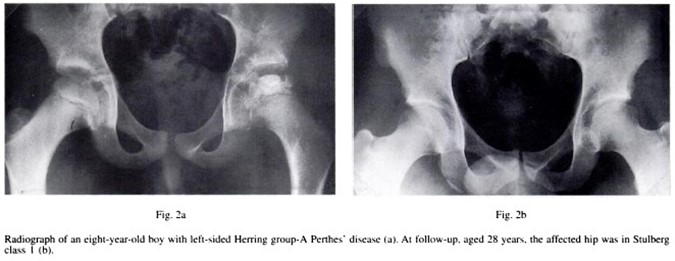A nurse is caring for a child who is suspected of having Legg-Calve-Perthes disease.
The nurse should prepare the child for which of the following diagnostic procedures?
Bone biopsy.
Radiographs.
MRI.
Genetic testing.
The Correct Answer is B
Radiographs are vital to the diagnosis of Legg-Calve-Perthes disease.
Initial X-rays might look normal because it can take one to two months after symptoms begin for the changes associated with Legg-Calve-Perthes disease to become evident on X-rays.
The doctor will likely recommend several X-rays over time, to track the progression of the disease.

Bone biopsy is not a diagnostic procedure for Legg-Calve-Perthes disease.
MRI can visualize bone damage caused by Legg-Calve-Perthes disease more clearly than X-rays can but are not always necessary.
Genetic testing is not a diagnostic procedure for Legg-Calve-Perthes disease.
Nursing Test Bank
Naxlex Comprehensive Predictor Exams
Related Questions
Correct Answer is D
Explanation
The Ortolani test is a screening test that would help rule out a hip problem related to babies who are breech.
It is used to check for developmental dysplasia of the hip (DDH).
Choice A is not an answer because bracing is a treatment for DDH, not a screening test.
Choice B is not an answer because genu valgum is a condition where the knees angle in and touch each other when the legs are straightened, and it is not a screening test for DDH.
Choice C is not an answer because the Adams test is used to screen for scoliosis, not DDH.
Correct Answer is C
Explanation
Elevating the head of the bed can help to reduce pressure on the cervical spine and promote comfort for the client.
Choice A is not correct because a pelvic girdle is not used with halo traction.
Choice B is not correct because placing the client in a supine position can increase pressure on the cervical spine.
Choice D is not correct because elevating the foot of the bed would not provide any benefit for a client in halo traction.
Whether you are a student looking to ace your exams or a practicing nurse seeking to enhance your expertise , our nursing education contents will empower you with the confidence and competence to make a difference in the lives of patients and become a respected leader in the healthcare field.
Visit Naxlex, invest in your future and unlock endless possibilities with our unparalleled nursing education contents today
Report Wrong Answer on the Current Question
Do you disagree with the answer? If yes, what is your expected answer? Explain.
Kindly be descriptive with the issue you are facing.
